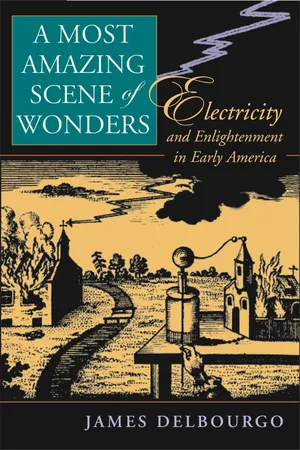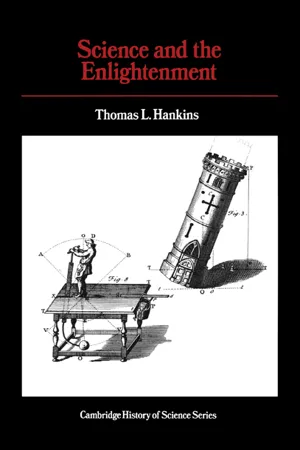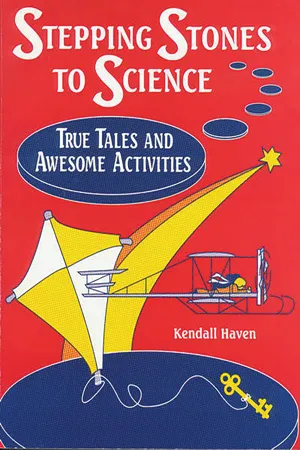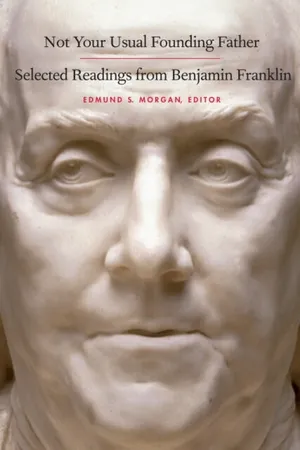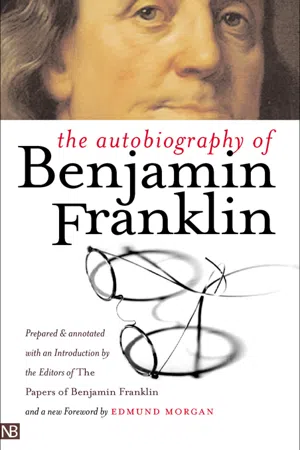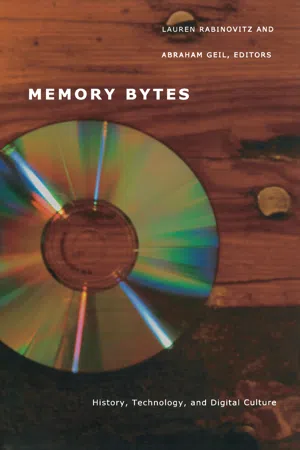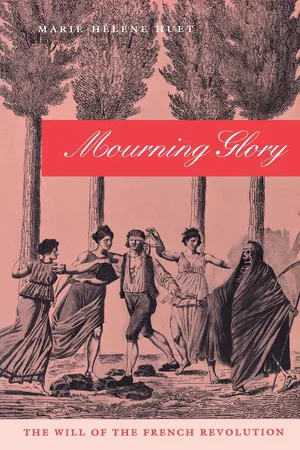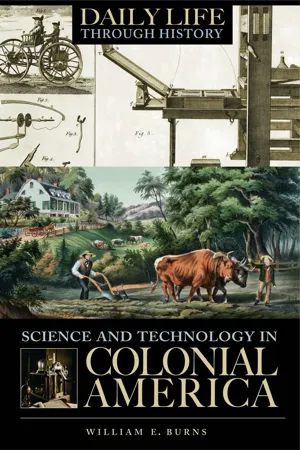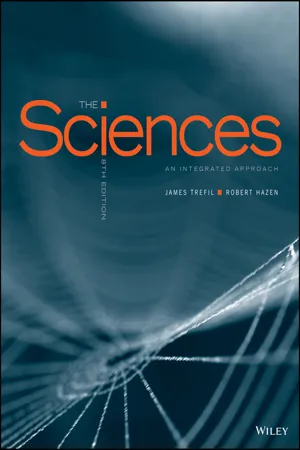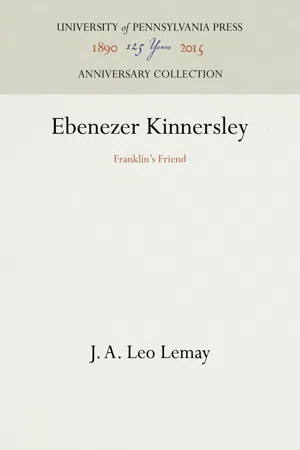Physics
Benjamin Franklin's Kite Experiment
Benjamin Franklin's kite experiment was a pivotal demonstration of the connection between lightning and electricity. In 1752, Franklin flew a kite during a thunderstorm, attaching a metal key to the string. When lightning struck the kite, the key conducted electricity, proving that lightning is a form of electricity. This experiment laid the foundation for understanding the nature of electricity and lightning.
Written by Perlego with AI-assistance
Related key terms
1 of 5
12 Key excerpts on "Benjamin Franklin's Kite Experiment"
- eBook - ePub
Fleet Fire
Thomas Edison and the Pioneers of the Electric Revolution
- L. J. Davis(Author)
- 2012(Publication Date)
- Arcade(Publisher)
CHAPTER ONE
FRANKLIN, THE ADROIT OLD ADVENTURER
Let the experiment begin.— Benjamin FranklinI n something resembling a state of pique, Benjamin Franklin, that most well regulated to go fly a kite.Although the event has become deeply embedded in American folklore, opinion is still divided on whether this, his most famous experiment, actually took place. His own description of the 1752 event in the Autobiography is uncharacteristically vague, an unusual lapse for one of the clearest stylists and sharpest observers in the English language. The full account remained unwritten for fifteen years after the experiment itself, until in 1767 the English chemist and religious philosopher Joseph Priestley published The History and Present State of Electricity , a two-volume work heavily influenced by Franklin (some believe he wrote all or most of it, because Priestley was a chemist) that remained the definitive study of the subject for the balance of the eighteenth century. But to doubt the existence of the experiment is to quibble in the manner of the early twenty-first century. The event took place on a day in June, in a field outside Philadelphia that was equipped with a shed, and it happened as it did because Franklin was angry.The tale of the actual kite itself begins in 1750, when Franklin wrote the latest in a series of scientific letters to Peter Collinson, a prosperous London mercer, knowing that Collinson would, as he had always done in the past, pass the correspondence on to his colleagues in the Royal Society for comment and discussion. Franklin had not been to London since 1726, when as a young man he had been stranded there in a doomed attempt to buy the presses and type that he needed to set himself up in the printing trade back home in Pennsylvania. Collinson was an amateur naturalist of some note, who had exploded the popular notion that swallows hibernate in streambeds, and his connection with Franklin was fourfold. He was the London agent of the Library Company of Philadelphia, an organization Franklin had founded to establish the first public library in America. In the course of their library correspondence, Collinson had rekindled Franklin’s interest in electricity — some time before, Franklin had bought some apparatus from a traveling electrical showman but had set it aside — by sending him one of the glass rods that, when rubbed, produced sparks and other electrical phenomena in the current London parlor craze for toying with electricity. Because of his scientific bent, Collinson was well informed of new developments in England and on the Continent, and once Franklin began his own series of groundbreaking experiments, he relied on Collinson for word that he was not needlessly duplicating work that had already been done. And because Collinson, a gentleman amateur, was a member of the Royal Society, he was Franklin’s conduit to the admired world of European science. Although Franklin had told Collinson to keep the contents of his first electrical letter to himself, Collinson had ignored Franklin’s instructions and passed it on. Now, passing on the letters describing his electrical experiments was routine. The subject of the latest, in 1750, was lightning. - eBook - PDF
A Most Amazing Scene of Wonders
Electricity and Enlightenment in Early America
- James Delbourgo(Author)
- 2006(Publication Date)
- Harvard University Press(Publisher)
Similar risks attended Franklin’s famed kite experiment, though he-roic descriptions barely even suggested this. According to Joseph Priestley, the English Dissenter and electrical philosopher to whom Franklin later confided his version of the experiment, Franklin be-lieved that no building in Philadelphia was sufficiently tall for the sentry-box test, so he proposed an alternative. “It occurred to him,” Priestley wrote, “that by means of a common kite he could have better access to the regions of thunder than by any spire whatever.” In his own published instructions, Franklin recommended using a kite made of two crossed strips of cedar and covered in nonconductive silk (to withstand stormy weather and accumulate charge), terminating in a pointed wire. A key was fastened to the lower end of the twine string, by a silk ribbon. As with the sentry-box test, the experimenter holding the kite string should “stand within a door or window, or under some cover, so that the silk ribbon may not be wet.” Nor should the twine or ribbon touch the window or door, lest some of the charge should acci-dentally be lost. “As soon as any of the thunder clouds come over the kite,” Franklin observed, “the pointed wire will draw the electric fire from them, and the kite, with all the twine, will be electrified, and the loose filaments of the twine will stand out every way, and be attracted by an approaching finger. And when the rain has wet the kite and twine, so that it can conduct the electric fire freely, you will find it stream out plentifully from the key on the approach of your knuckle.” 7 This was a singular moment of enlightenment through self-evi-dence, in which the experimenter’s body was the crucial instrument of knowledge. The identity of lightning and electricity was demonstrated through a sensational analogy—that is, by the physically similar expe-rience of both forces. - eBook - PDF
- Thomas L. Hankins(Author)
- 1985(Publication Date)
- Cambridge University Press(Publisher)
The article, a translation by the G6t- tingen physiologist Albrecht von Haller (1708-77) of an earlier article in the Dutch journal Bibliotheque raisonie, described experi- EXPERIMENTAL PHYSICS 63 ments at length and clearly identified them as being electrical. Col- linson also included a glass tube so that the members of the Library Company could perform their own experiments. Working largely independently from the Europeans, with Franklin as their chief experimenter, the Philadelphians made two important contribu- tions to the growing electrical science. Franklin described them in 1747 in letters to Collinson that circulated in England before they were published in 1751 in the Philosophical Transactions. The first discovery concerned the peculiar power of pointed con- ductors to "draw off and throw off" the electrical fire. The experi- menters had found that if one brought a sharp bodkin up to an electrified metal sphere, the "fire" leaked off the sphere to the sharp point for a distance of up to 8 or 10 inches. In the dark, the exper- imenters observed a glow at the point, and afterward the sphere was found to have lost its electricity. To the practical-minded Franklin this experiment later suggested the lightning rod, which was intended to defuse the electricity in thunderclouds by drawing it off before it could strike as lightning. It was one of the first inventions to make good Francis Bacon's promise that science would produce new and useful technology. Franklin suggested lightning experi- ments in 1749 and performed his famous kite experiment in 1752. By that time experimenters in France had already drawn electricity from the clouds and had even performed the kite experiment independently, so it was not original with Franklin. Franklin's kite had a pointed wire attached to the frame of the kite to draw the electricity. The wet kite string conducted the electricity to the key, which was insulated from Franklin's hand by a silk ribbon. - eBook - PDF
Stepping Stones to Science
True Tales and Awesome Activities
- Kendall Haven(Author)
- 1997(Publication Date)
- Libraries Unlimited(Publisher)
Twice I had to hold Franklin down as a fierce gust of wind grabbed hold of the kite and tried to rip it from his hands. The kite twisted and tore at the air like a rampaging bull. Our coats snapped in the howling wind, spraying rainwater like fountains. We could barely hear each other shout over the screeching gale. Then it happened. No, a lightning bolt did not strike the kite, as has often been reported. And a good thing, too. A French scientist was killed a few months later by a lightning strike when he tried to repeat Franklin's experiment. No, what happened that stormy afternoon was that the twine kite string began to glow a faint blue. The fibers on the twine bristled straight out. We could almost see electricity trickling down the twine. We stared at the key, waiting to see if it would also glow. But the key showed no evidence of the electricity building up inside it. Franklin reached out a cautious finger closer and closer to the key. And pop! A spark leapt to his knuckle and shocked him—just like from his Leyden jar. Franklin's son was along with us. He reached out a hand and a blue arc sizzled from key to finger. It made him cry out with fright, and he leapt back behind his father, shaking his hand. The electricity in clouds, which everyone called lightning, really was the same as static electricity. There was only one kind of electricity. It was all the same. Franklin's experiment proved it. Satisfied, Franklin reeled in the now-tattered kite, and we hurried inside for congratulations, hot cider, and a careful review and discussion of the experiment. Although it would take men like Michael Faraday of England and Samuel Morse of America another 50 years to fully under- stand the nature of electricity, Benjamin Franklin, on that stormy after- noon, led the world of science in a great step forward. But the struggles of Faraday and Morse are another story. From Stepping Stones to Science. © 1997 Kendall Haven. Teacher Ideas Press. (800) 237-6124. - eBook - PDF
Not Your Usual Founding Father
Selected Readings from Benjamin Franklin
- Benjamin Franklin, Edmund S. Morgan(Authors)
- 2008(Publication Date)
- Yale University Press(Publisher)
In May 1752 French scientists, following his suggestion, e l e c t r i c f i r e [ 1 1 3 ] made the test. Before hearing of it, Franklin (according to his friend Joseph Priestley) made the kite experiment in June. However the experiment was performed, or by whom, it made Franklin famous. He had already sur-mised that lightning strikes, whether electric or not, could be prevented from hitting buildings by lightning rods. In the 1753 Poor Richard’s Alma-nack he included instructions for the making and use of lightning rods, expanded in a paper written in 1767 and published in the 1769 edition of Experiments and Observations. As always Franklin’s great aim in conducting experiments of any kind was to make himself and his discoveries useful to his fellow human beings, particularly in the everyday realm. In describing to Collinson his earliest electrical experiments, many of which may have seemed calculated more for theatrical display than for scientific investigation, he regretted that ‘‘We have hitherto been able to discover Nothing in this Way of Use to Mankind.’’ He was highly gratified that the lightning rod proved so useful. Franklin’s experiments demonstrated properties of electricity that had no immediate use or application in his time, but they advanced the understanding of a force that would transform the world. A sample of some of his observations, including those with and about lightning, su≈ces to show how his mind worked. We end this chapter with one of his last reports to Collinson. Note on the Similarities Between Electricity and Lightning, 1749 Nov. 7, 1749. Electrical fluid agrees with lightning in these particulars: 1. Giving light. 2. Colour of the light. 3. Crooked direction. 4. Swift motion. 5. Being conducted by metals. 6. Crack or noise in exploding. 7. Subsisting in water or ice. 8. Rending bodies it passes through. 9. De-stroying animals. 10. Melting metals. 11. Firing inflammable substances. - eBook - PDF
The Autobiography of Benjamin Franklin
Second Edition
- Loch K. Johnson(Author)
- 2009(Publication Date)
- Yale University Press(Publisher)
Benjamin Franklin sician then at Paris, wrote to a Friend who was of the Royal Society an Account of the high Esteem my Experiments were in among the Learned abroad, and of their Wonder that my Writings had been so little noticed in England. The Society on this resum'd the Consid-eration of the Letters that had been read to them, and the celebrated Dr. Watson drew up a summary Account of them, and of all I had afterwards sent to England on the Subject, which he accompanied with some Praise of the Writer. 9 This Summary was then printed in their Transactions: And some Members of the Society in London, particularly the very ingenious Mr. Canton, having verified the Ex-periment of procuring Lightning from the Clouds by a Pointed Rod, and acquainting them with the Success, they soon made me more than Amends for the Slight with which they had before treated Mazeas wrote the Royal Society of Louis XV's pleasure in the discoveries ten days later; and Franklin probably made his famous kite experiment in June 1752. Papers, iv, 302-10, 315-17. It is particularly disappointing that Franklin did not include here a full, first-hand account of his kite experiment. His statement of 1752 is very brief; the fullest report that survives is the one Joseph Priestley included in his The History and Present State of Electricity (London, 1767), based on information that Franklin had supplied him orally. Papers, iv, 360-9. Franklin had not carried out his own proposed experiment in 1750, soon after he first suggested it, because at that time he thought he needed to erect his conductor on a higher building than any then standing in Philadelphia. Apparently it was only later that he thought of using a kite. 9. Actually, Watson had read his Account to the Royal Society in June 1751, eleven months before Dalibard's successful experiment, but curiously he had failed to mention some of Franklin's most important ideas. - eBook - PDF
Memory Bytes
History, Technology, and Digital Culture
- Lauren Rabinovitz, Abraham Geil, Lauren Rabinovitz, Abraham Geil(Authors)
- 2004(Publication Date)
- Duke University Press Books(Publisher)
1 Indeed, Franklin could not have imagined performing experiments with lightning without having first articulated his model of a single electrical fluid operating according to the principle of bipolar charges, a fluid that could then be ‘‘drained’’ from the clouds by means of a pointed rod or wire. 2 Elaborated throughout his New Experiments and Observations on Electricity, made at Philadelphia in America (1751, 1753, 1769, 1774), Franklin’s single-fluid model and his theory of charges were demon-strated in comparatively mundane performances such as ‘‘the elec-tric kiss,’’ the ‘‘electric party,’’ or ‘‘the electric book.’’ 3 Unlike his fa-mous kite experiment, these were not particularly original in form but rather closely mimicked electrical entertainments already being performed in European courts and philosophical circles. 4 Unlike the lightning rod, moreover, experiments like ‘‘the electric kiss’’ did not pretend to shield organic beings from electrical power; on the con-trary, they inserted human bodies directly into Franklin’s electrical system as conduits of the electrical fluid and witness to its effects. When Franklin first began to perform experiments in Philadelphia in 1745, he entered a highly politicized world of European electrical investigation in which British, French, Dutch, and German experi-menters played a leading role. Many of the parameters of electrical experiment had already been marked out by British exhibitors (such as William Watson, Benjamin Rackstrow, and Benjamin Martin), when in 1751 Watson read a paper before the Royal Society sum-marizing Franklin’s contributions. Like Franklin, Watson had spent the late 1740s sending electricity across rivers, igniting alcoholic ‘‘spirits,’’ and directing electric shocks through the bodies of vari-ously connected ladies and gentlemen. - eBook - ePub
Mourning Glory
The Will of the French Revolution
- Marie-Hélène Huet(Author)
- 2015(Publication Date)
- University of Pennsylvania Press(Publisher)
Benjamin Franklin’s experiments with an electric kite, 1752. Engraving. Collection Viollet. Monsieur de Vissery entrusted the affair to Antoine-Joseph Buissart, 7 then a member of the Arras and Dijon Academies, who regularly contributed to the Journal de Physique. Buissart took the affair to heart, and interminable consultations took place throughout France. The man slowest to answer Buissart’s repeated requests for scientific data was Jean-Antoine-Nicolas Caritat, Marquis de Condorcet, who eventually let it be known that, speaking in his capacity as perpetual secretary of the Academy of Sciences, he considered the best defense to be a detailed and documented report containing all the scientific arguments in favor of the lightning rod. Buissart went to work and published his report in 1782 - eBook - PDF
- William E. Burns(Author)
- 2005(Publication Date)
- Greenwood(Publisher)
For example, Franklin was interested in the possibility of using electricity to slaughter chickens and turkeys, claiming that this was not only more humane but resulted in a more tender bird. Although many before Franklin had suggested that lightning was elec- trical in nature, Franklin was the first to demonstrate it experimentally. Lightning was not merely an interesting phenomenon to study; it was also a scourge to many residents of the colonies, where lightning storms were more common then they were in Europe. Franklin suggested that his lightning studies pointed to a way (other than prayer) for people to defend themselves against the heavenly scourge. He believed that sharp objects caused the electrical fluid to dissipate rather than concentrating in the form of a lightning bolt: "The clouds have often more of this fluid in proportion than the earth; in which case as soon as they come near enough (that is, within striking distance) or meet with a conductor, the fluid quits 152 Science and Technology in Colonial America them and strikes into the earth" (Franklin, The Ingenious Dr. Franklin, 58). Franklin's suggestion for lightning rods in Experiments and Observations on Electricity laid great stress on their pointedness. Franklin's friend and fellow electrical researcher, the Reverend Ebenezer Kinnersley, helped spread the gospel of lightning rods in his lecture tours of the colonies in 1751, using miniature buildings and electrical charges to show how they protected from lightning damage and fire. Other lead- ing colonial scientists, including the Harvard professor John Winthrop, a direct descendant of the great Winthrop Puritan statesmen of the seven- teenth century, endorsed the new devices. Lightning rods quickly spread as protectors of large structures, despite the misgivings of some religious people who saw them as an impious attempt to thwart the will of God. - eBook - PDF
The Sciences
An Integrated Approach
- James Trefil, Robert M. Hazen(Authors)
- 2016(Publication Date)
- Wiley(Publisher)
Most scien- tists of the time thought that electrical efects resulted from the interaction of two diferent “electrical luids.” Franklin, however, became convinced that all electrical phenomena could be explained by the transfer of a single electrical luid from one object to another. He realized that objects could have an excess or a deiciency of this luid, and he applied the names “negative” and “positive” to these two situations. Following this work, Franklin is said to have demonstrated the electrical nature of light- ning in June 1752 with his famous (and extremely dangerous) kite experiment (Figure 5-3). A mild lightning strike hit his kite and passed along the wet string to produce sparks and an electrical shock. Not content with acquiring experimental knowledge, Franklin followed his discovery of the electrical nature of lightning with the invention of the lightning rod, a metal rod with one end in the ground and the other end sticking up above the roof of a building. It carries the electrical charge of light- ning into Earth’s surface, diverting it away from the build- ing. Lightning rods caught on quickly in the wooden cities of North America and Europe, preventing countless deadly ires. hey are still widely used. FIGURE 5-1 When the girl touched the electrically charged sphere, her hair became electrically charged as well. Individual hairs repel each other and thus “stand on end.” Ken Kaminesky / Getty Images, Inc. Metal spheres with opposite charges are attracted to each other. Metal spheres with the same charge are repelled from each other. – + + + (a) (b) FIGURE 5-2 The two kinds of electrical charges. (a) Opposite charges attract, while (b) like charges repel. 101 5.2 STATIC ELECTRICITY The Movement of Electrons We now understand that there are two kinds of electrical charge, so observations of both attractive and repulsive behavior of charged objects are easy to understand. - eBook - PDF
Ebenezer Kinnersley
Franklin's Friend
- J. A. Leo Lemay(Author)
- 2017(Publication Date)
M James Jones Wilmer, Memoirs of the Late Dr. Benjamin Franklin . . . (London, 1790), pp. 10-11. William Barton, Memoirs of David Rittenhouse (Philadelphia, 1813), p. 155. * Benjamin Franklin's Experiments, p. 350. Pennsylvania Gazette, May 4, 1774. THE EARLY SCIENTIFIC CAREER OF EBENEZER KINNERSLEY 8 7 And Franklin expressed concern for Kinnersley when the latter was ill in 1772. If Kinnersley is recognized as the greatest popularizer in America of the wonders of electricity and the usefulness of lightning rods, and if his own important and original contri-butions to the study of electricity are remembered, then he has all of the just credit in electricity to which he seems entitled. The new theory and the boldest imaginative reason-ing on electricity were Franklin's. Kinnersley closed his most important letter to Franklin with these words : And now, Sir, I most heartily congratulate you on the pleasure you must have in finding your great and well-grounded expectations so far fulfilled. May this method of security from the destructive violence of one of the most awful powers of nature, meet with such further success, as to induce every good and grateful heart to bless God for the important discovery! May the benefit thereof be diffused over the whole globe! May it extend to the latest posterity of mankind, and make the name of FRANKLIN, like that of NEWTON, immortal.. Albert Henry Smyth, ed.. The Writings of Benjamin Franklin (New York, 1905-1907), V, 396. Benjamin Franklin's Experiments, p. 358. III Teacher and Scientist, I 7 Ç 3-I 778 ON JULY 10, 1753, at a meeting of the Trustees of the Phila-delphia Academy and Charitable School : Mr. Peters informed the Trustees, that in pursuance of their Resolution of providing a new Master for the English School, Mr. Franklin had sometime since wrote to Mr. Ebenezer Kinnersley, then in the West Indies to know if that Place would be agreeable to him, and that Mr. - eBook - ePub
Now We Get It!
Boosting Comprehension with Collaborative Strategic Reading
- Janette K. Klingner, Sharon Vaughn, Alison Boardman, Elizabeth Swanson(Authors)
- 2012(Publication Date)
- Jossey-Bass(Publisher)
My question will read, “What did Ben Franklin want to prove with his kite experiment?” Now, I need an answer to my question. Let’s reread the first sentence of the paragraph: “Ben hypothesized, or proposed, that lightning was a stream of electricity created in the clouds during a storm.” There is my answer. I am going to write a complete sentence that reads: He wanted to prove that lightning is made of electricity. Continue modeling if necessary. Students either follow along while you read aloud or read the passage silently to themselves.Students provide input as directed by the teacher.Students write the question on their learning logs.Students may assist the teacher in locating the answer or writing the answer. 4. Practice How to Write Right-There QuestionsTEACHER ACTION STUDENT ACTION Continue modeling and engaging students in guided practice of writing Right-There questions until a majority of the class can write and answer their own questions.Now, you will write some Right-There questions on your own. Remember, you need to identify information you want or need to remember from the passage and write a question about that information. Write one Right-There question and answer from the section entitled “Kite Experiment.” Be ready to share your question and answer with the class. Exhibit 2.7 provides a sample learning log showing how students can write Right-There questions and answers.Monitor student work and provide feedback and guidance. As you monitor, note students who have written high-quality questions. Ask these students to share their questions with the class. Discuss why their questions are of high quality. Students participate in guided practice activities.Students read passages and write (and answer) Right-There questions. They may work independently, with a partner, or in small groups.
Index pages curate the most relevant extracts from our library of academic textbooks. They’ve been created using an in-house natural language model (NLM), each adding context and meaning to key research topics.

